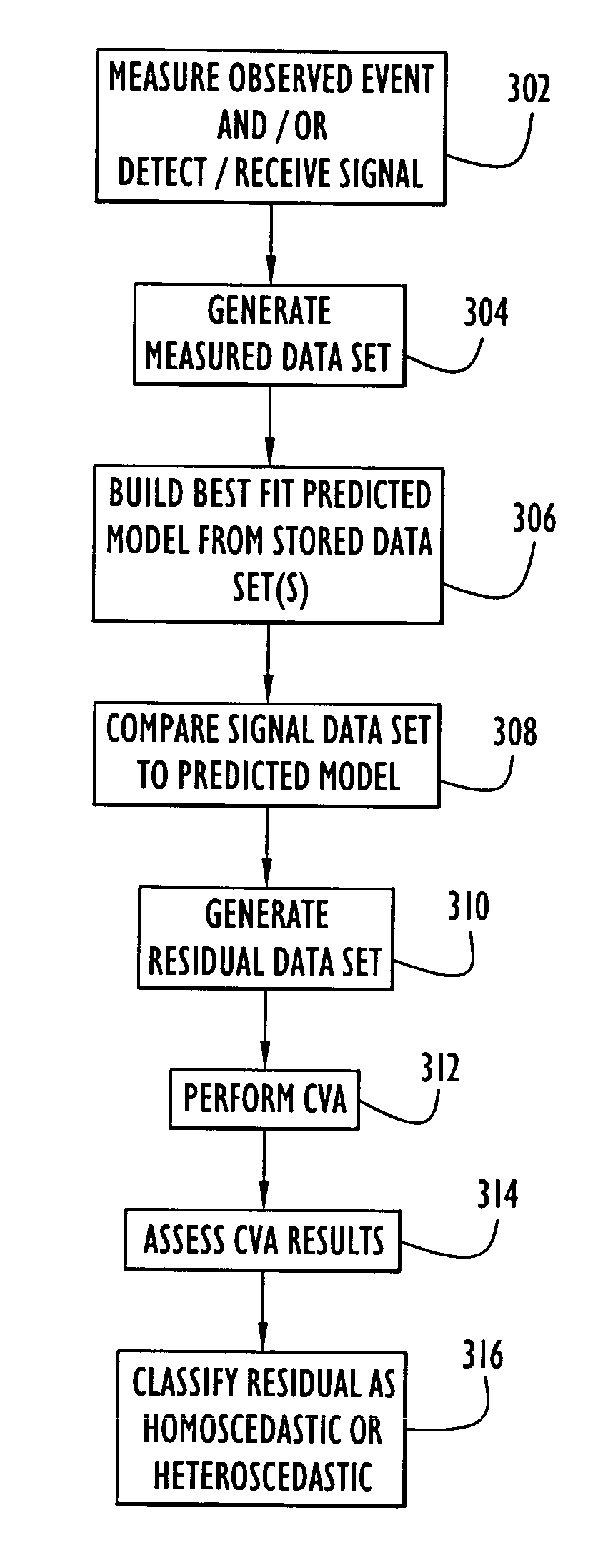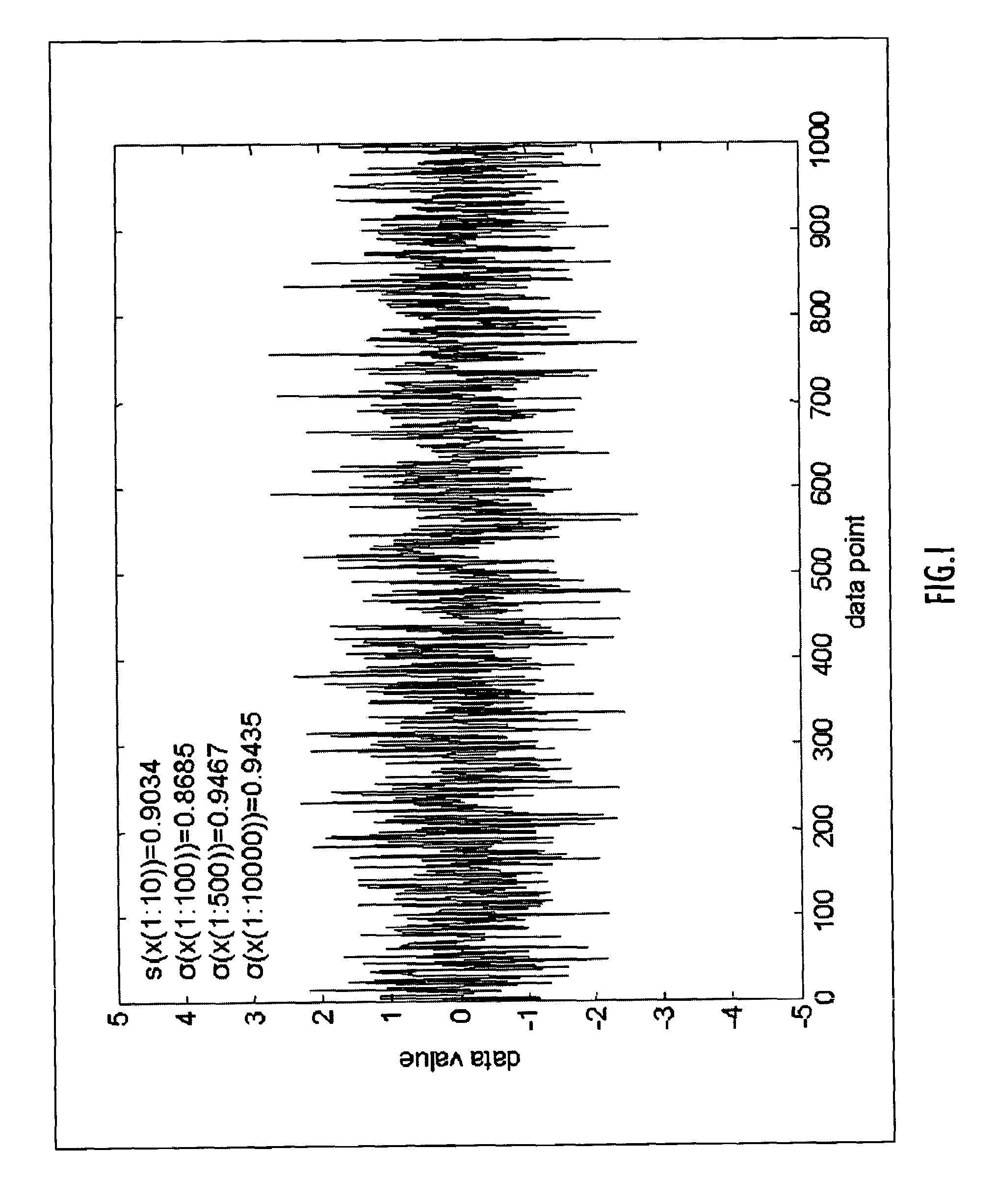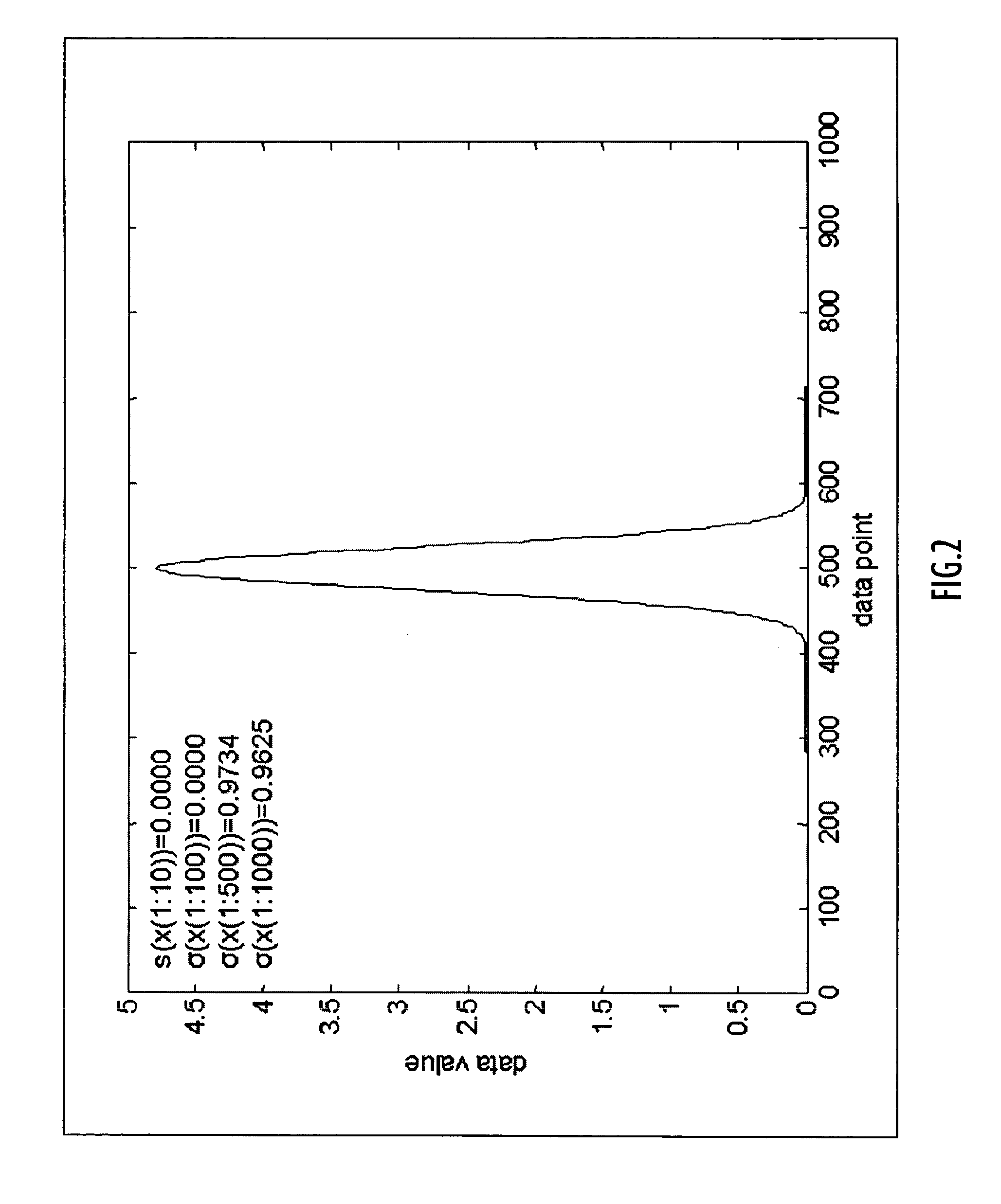Method and apparatus for categorizing unexplained residuals
a residual and classification technology, applied in the field ofsignal processing, can solve the problems of low statistical confidence in the predicted model, additional noise, and typical contain noise, and achieve the effect of reducing computational processing and being easy to interpr
- Summary
- Abstract
- Description
- Claims
- Application Information
AI Technical Summary
Benefits of technology
Problems solved by technology
Method used
Image
Examples
Embodiment Construction
[0042]Preferred embodiments according to the present invention are described below with reference to the above drawings, in which like reference numerals designate like components.
[0043]The present invention relates to a novel method and apparatus for assessing residual noise, associated with virtually any measured observation or communication signal, to determine whether the noise is homoscedastic or heteroscedastic in nature. If a residual noise signal is homoscedastic, a measure of variation calculated for a subset, or window, taken from anywhere within the residual signal, is similar to the measure of variation of the entire residual. If a residual noise signal is heteroscedastic, the measure of variation calculated for subsets, or windows, vary significantly depending upon the size of the window and the position of the window within the residual signal.
[0044]The method and apparatus described implements a novel process, referred to as Continous Variance Analysis (CVA), which as...
PUM
 Login to View More
Login to View More Abstract
Description
Claims
Application Information
 Login to View More
Login to View More - R&D
- Intellectual Property
- Life Sciences
- Materials
- Tech Scout
- Unparalleled Data Quality
- Higher Quality Content
- 60% Fewer Hallucinations
Browse by: Latest US Patents, China's latest patents, Technical Efficacy Thesaurus, Application Domain, Technology Topic, Popular Technical Reports.
© 2025 PatSnap. All rights reserved.Legal|Privacy policy|Modern Slavery Act Transparency Statement|Sitemap|About US| Contact US: help@patsnap.com



